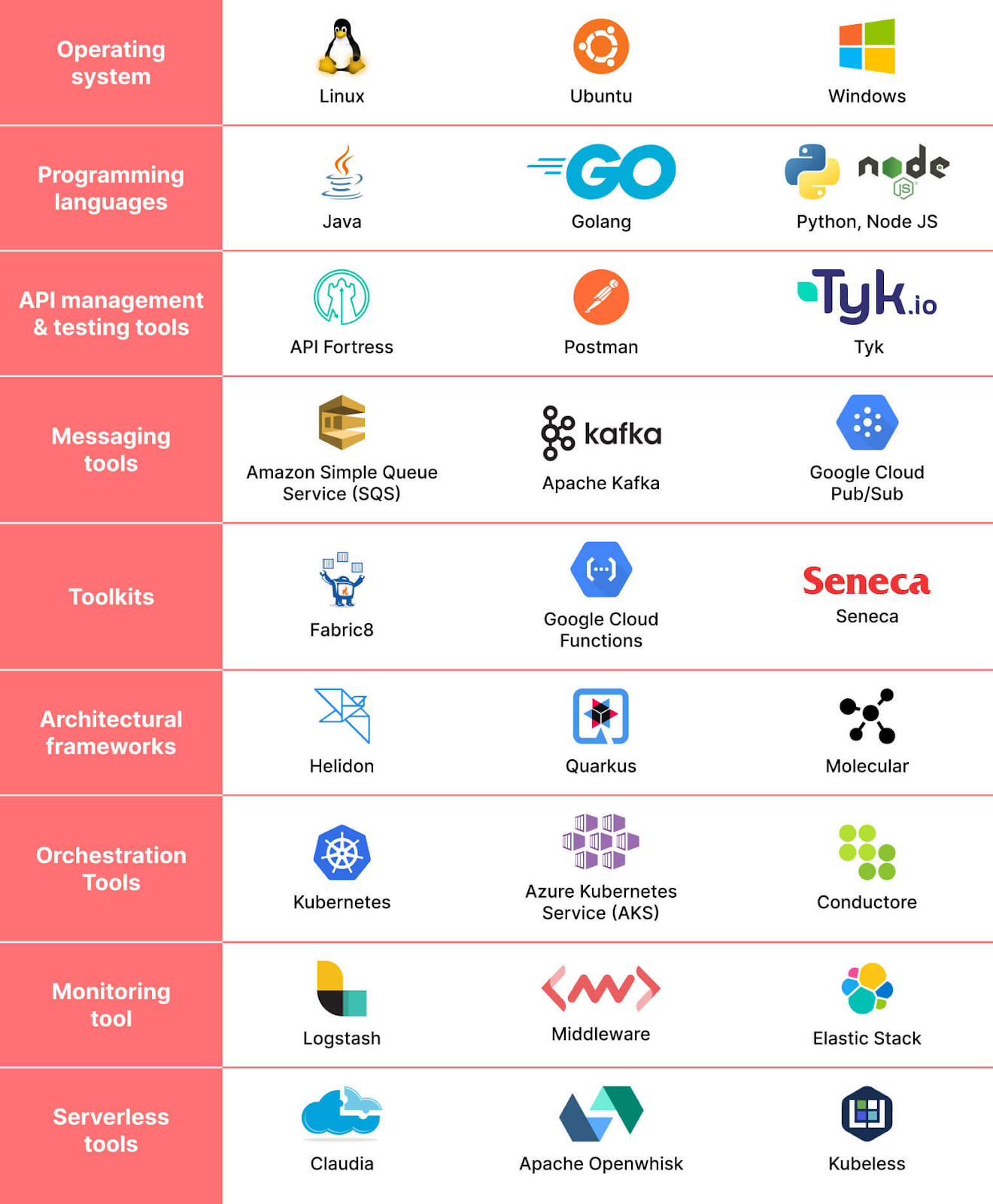Quick Summary: Microservices architecture is a modern approach to application development where large, complex apps are divided into smaller, independent components that communicate via APIs. Unlike monolithic systems, microservices enable scalability, flexibility, faster deployment, and easier maintenance. They allow teams to work in parallel, integrate diverse technologies, and deploy services separately without affecting the whole application.
In this mobile-driven age, application developers must take quick action to make changes according to changing requirements. Here, it is essential to ensure that the usual operations of the application are not affected. There, developers trust in a new development pattern, known as microservices architecture. It structures a large and complex application as a collection of small, lightweight, and independent components with specific functions.
This blog digs deep into the challenges and benefits of microservices architecture. Before moving ahead, we will have an overview of microservices and the difference between microservices vs monolithic architecture.
Overview of Microservices Architecture
Microservices architecture is an advanced approach that enables developers to divide large applications into smaller, self-contained, and functional units. All these units or components can function independently and communicate with one another using APIs. Here, we can mention that though microservices are independent of each other, they can work together to achieve the desired outcome in the application.
Microservices architecture can give developers the necessary scalability, simplicity, and flexibility to build highly sophisticated applications. As a robust approach, it addresses the limitations of monolithic architecture. Let’s understand the difference between microservices vs monolithic.
Microservices vs Monolithic Architecture
Monolithic architecture is a legacy approach with several limitations. Developers can build monoliths as single unified systems. On the other hand, microservices are collections of smaller and independent services ready for deployment.
Monolithic architecture is self-contained and independent from other apps. It makes both development and deployment of the app easy with simplified testing and debugging. However, it poses challenges in scalability and keeps the development process slow. Moreover, individual error can affect the app’s performance.
Microservices architecture is a more agile and flexible option as compared to monolithic architecture. It enables continuous deployment and quick release cycles. Moreover, microservices offer high maintainability and testing ability with more flexibility for customized applications.
Microservices architecture consists of different components that can lead to increasing development costs and debugging challenges due to the high data volume.
Mechanism and Working of Microservices Architecture
Microservices architecture can classify and separate large, complex applications. Every microservice deals with your application’s specific feature, like logging, data search, etc. As these microservices have loosely coupled components, they can form a single application. When the client generates requests through the user interface, one or more microservices can perform the requested task through the API gateway. It is useful for solving complex issues.
Microservices architecture facilitates the independent development, scaling, and deployment of each component. As the code is not shared with other services, developers can establish communication among different components through well-defined APIs. In microservices, each service has a unique set of skills to address a specific issue. Developers can further segregate these services into more minor services using additional code.
In a way, microservices architecture offers many benefits to application developers.
Advantages of Microservices Architecture
Microservices offer many benefits to application developers and engineers. Here we mention some noteworthy advantages of microservices architecture

Save Effort and Time
Microservices architecture enables smaller development teams to work in parallel on various components simultaneously. It makes it easier to identify issues or key functionality and scale the component accordingly. As a result, developers can save their time and effort, improving the application’s performance.
Increased Scalability
This is one of the biggest differences between microservices vs monolithic architecture. As a microservices architecture facilitates the independent release of individual services, irrespective of technologies, DevOps can select the most suitable tech stack. This scalability makes applications more powerful and fully functional.
Functional Advantage
Unlike monolithic applications, microservices-based applications can be divided into standalone and fully functional software components. As a result, developers can identify the error from any single component and fix it while maintaining the functionality of the application’s other non-related units.
Integration Facility
Microservices enable developers to select the most suitable tech stack for one component and its functions. It facilitates developers to get rid of opting for a single, standardized tech stack that covers all the functions of an application. This integration facility offers complete control over various options.
Separate Deployment
It is possible to deploy microservices independently at any point, thanks to the separate components. Development teams can work on one microservice and redeploy it after fixing errors without disturbing the entire application. This agility of microservices architecture makes the application’s modification easy for developers.
Though microservices architecture offers many benefits to software developers, it poses some challenges as well. Let’s go through a few challenges.
Challenges of Microservices Architecture
A single microservice is simpler than a monolith, but the entire architecture is way more complex. The microservices architecture consists of multiple databases, deployment pipelines, and monitoring tools. This complexity needs a reliable DevOps partner to manage everything seamlessly. Moreover, managing a microservices-based application requires significant operational expertise. It results in higher development costs and effort.
Is your business built for
scale with Microservices?
Explore More
Other challenges include maintaining data consistency across services and inter-service communication. Network failures and slow service responses can pose challenges. A poorly designed communication layer can also result in performance issues. Finally, debugging an issue is somewhat more complex in a microservice application than that in a monolithic app. Organizational maturity is essential to address and simplify testing complexity.
Tools and Technologies Supporting Microservices
Establishing a microservices architecture needs a mix of tools and technologies to ensure a seamless performance of the application. Here is the list of tools necessary for offering microservices-based development services
 NOTE- PLEASE MAKE AN IMAGE LIKE THIS.
NOTE- PLEASE MAKE AN IMAGE LIKE THIS.
It is better to consult a reputed DevOps company that excels in offering microservices for software development to know the right tech stack.
Conclusion
Microservices architecture gives the necessary scalability, agility, and customization facility for enterprise-grade applications. It can eliminate the limitations of legacy monolithic architecture effectively. Though it poses some challenges, companies can leverage its benefits and address challenges by assigning the project to experienced software developers.
Silver Touch Technologies Canada is a trusted software development partner. We offer microservices to build complex, enterprise-grade applications with desired features. Contact us to learn more about our DevOps-based software development services and business intelligence solutions.
FAQs
Microservices architecture can create a set of small, loosely coupled, independent services. It enables teams to develop, deploy, and scale services autonomously.
Microservices architecture is generally not considered suitable for small projects due to the increased complexity and operational overhead involved.
Yes, Odoo POS, especially with dedicated modules, allows for the management of multiple shops or branches with centralized control over products, sales, and inventory.
Not necessarily. However, containers like Docker are highly recommend and used for microservices.



